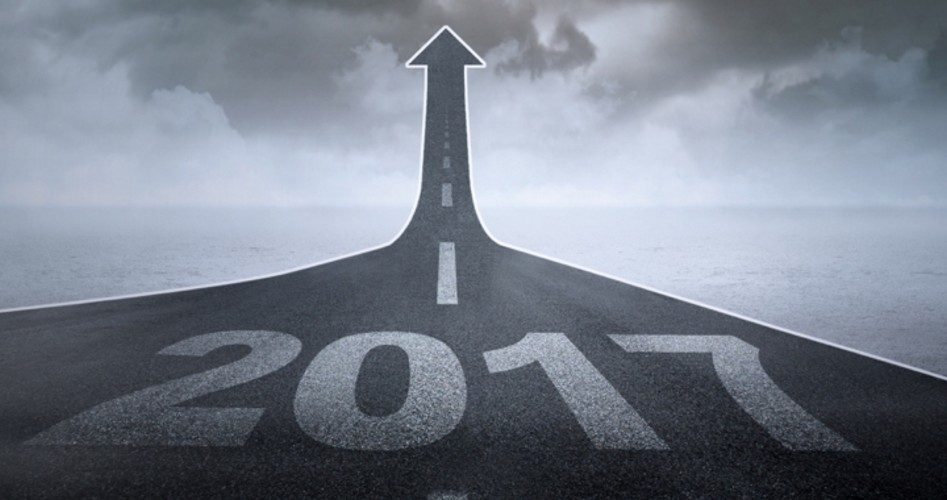
For Mick Mulvaney, President Donald Trump’s director of his Office of Management and Budget (OMB), reality is setting in. On the campaign trail Trump repeatedly promised four percent growth in the GDP (gross domestic product): “We’re bringing it from 1 percent up to 4 percent. And I actually think we can go higher than 4 percent. I think you can go to 5 percent or 6 percent.” (October, 2016). Later that month he doubled down during a speech to an audience in North Carolina: “I’m going to get us to 4 percent growth and create 25 million jobs over a 10-year period.”
Mulvaney’s editorial in the Wall Street Journal on Wednesday was unapologetic: “We are promoting MAGAnomics — and that means sustained 3 percent growth.” This new tag, whcih incorporates the acronym for “Make America Great Again,” is a play on “Reaganomics” from the 1980s:
Ronald Reagan … steered us to a boom that many people thought was unachievable. In the 7 ½ years following the end of the recession in 1982, real GDP [the country’s gross economic output adjusted for inflation] grew at an annual rate of 4.4%. That is what a recovery looks like, and what the American economy is still capable of achieving.
Mulvaney rolled out all of the policies which would be needed to get anywhere near the president’s new goal:
Tax reform: “We need to boost productivity. Fundamental to that is encouraging capital investment.” That will require “lower tax rates and faster cost recovery.” Translation: lower taxes on corporations and accelerated write-offs of their capital investments.
Cutting regulations: “Rolling back unnecessarily burdensome regulation will reduce the cost of doing business. When regulations increase costs, they decrease returns … [and] discourage any investment at all.”
Welfare reform: “Growth also depends on the size of the workforce … we need to reform welfare to ensure [that] it helps those truly in need of it, but does not encourage people to stay home.”
Energy: “The president’s ‘all-of-the-above’ energy strategy expands the economy’s growth potential … cheaper, cleaner, more abundant energy will … increase investment and employment across dozens of industries, from chemicals to automobiles.”
Rebuild infrastructure: “Rebuild[ing] America’s infrastructure will create immediate job opportunities … [and] boost the long-term productivity of American industry.”
Fair trade: “Ensuring that other nations do not undermine our economy … is essential to our economic future.”
Restraining government spending: “We will watch every dollar to minimize waste. We will, in short, seek to take from you only what government actually needs to function.”
Volumes have been written about government spending reaching far beyond Constitutional restraints with John F. McManus, the president-emeritus of the John Birch Society, estimating that federal spending would be 20 percent of its current budget if it stayed within its Constitutional boundaries.
In his Wall Street Journal piece, Mulvaney opined: “If we [that is to say, Congress] enact the president’s broad agenda — if MAGAnomics is allowed to work — we will have set the stage for the greatest revival of the American economy since the early 1980s.”
Two days later Mulvaney’s office announced that its earlier (May) estimate of government deficits had to be revised higher — $99 billion higher — thanks to revenue shortfalls. Mulvaney took the opportunity once again to pump the president’s agenda: “The rising near-term deficits underscore the critical need to restore fiscal discipline to the nation’s finances.”
His report projects a deficit of $702 billion for the current fiscal year, which began last October 1. Last year’s deficit was $585 billion.
But even 3 percent GDP growth is awfully optimistic, according to the Congressional Budget Office (CBO), which revised its January outlook two weeks ago. As reported by The New American:
The projected rise in [annual] deficits would be the result of rapid growth in spending for federal retirement and health care programs targeted to older people, and to rising interest payments on the government’s debt, accompanied by only moderate growth in revenue collections….
[Our] estimate of the shortfall for 2017 has increased since January — largely as a result of tax collections that have been weaker than expected — as has [our] projection of the cumulative deficit over [the next 10 years].
Instead of 4 percent, or 3 percent, or even 2 percent-plus growth, the CBO projects that the economy will grow in the foreseeable future at 1.9 percent, with the caveat that it could fall even lower as interest costs increase along with the national debt. And the CBO built in nothing about a recession occurring in the future — a recession that is already overdue.
MAGAnomics is catchy, like Reaganomics. It’s facing tough sledding in Congress.
Photo: Thinkstock
An Ivy League graduate and former investment advisor, Bob is a regular contributor to The New American magazine and blogs frequently at LightFromTheRight.com, primarily on economics and politics. He can be reached at [email protected].
Related article:



